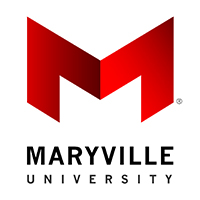Below is a summary of the abstract you submitted. Presenting author(s) is shown in bold.
If any changes need to be made, you can modify the abstract or change the authors.
You can also download a .docx version of this abstract.
If there are any problems, please email Dan at dar78@pitt.edu and he'll take care of them!
This abstract was last modified on May 14, 2024 at 10:03 a.m..

Herein, we analyzed protein-encoding sequences of Pandoravirus dulcis, a virus belonging to the newly discovered family of Pandoraviridae, known to have double-stranded DNA genomes reaching up to 2.5 million bases and a viral particle of one micrometer in length. What makes Pandoravirus truly mind-boggling is that a mere 7% of its 2,556 encoded genes match any known genes (6). In essence, 93% of its genome remains an enigmatic frontier, a treasure trove of genetic secrets yet to be unveiled. The host of Pandoravirus dulcis is a free-living amoeba, Acanthamoeba castellanii, known to harbor endosymbionts such as obligate intracellular bacteria that use amoeba as “training grounds” to facilitate bacterial pathogenesis in eukaryotic cells. The origins of Pandoraviruses are a subject of intense scientific inquiry. Based on genomic analyses, some researchers propose that Pandoraviruses may have evolved from a cellular ancestor, such as bacteria. This hypothesis suggests that viruses might have undergone significant genome reduction and adaptation to a parasitic lifestyle over time. The acquisition of cellular-like genes could have facilitated their survival and replication within host organisms. However, the exact nature of symbiosis and the benefit it represents for the amoeba host are unknown. Using various bioinformatics tools, we selected 28 putative secreted proteins and 66 putative membrane-bound proteins encoded by the Pandoravirus dulcis strain of the virus. Through an extensive literature search, sequence alignments, and fold prediction algorithms, we identified open reading frames (ORFs) with structural homology to bacterial and host Acanthamoeba proteins that play important roles in metabolism, DNA replication, cell signaling, and cytoskeletal motility. Specifically, P. Duclis encodes a putative chorismate synthase, polyketide synthase, mitochondrial translocase, DNA clamp loader, structural components of extracellular matrix, carbohydrate, and actin-binding proteins, and several serine/ threonine kinases. Our computational analysis favors the defensive symbiosis hypothesis, where competition with intracellular bacteria inside the host itself creates the need for the Pandoravirus to adapt to interact not only with amoeba but also with bacteria present in the same intracellular niche

